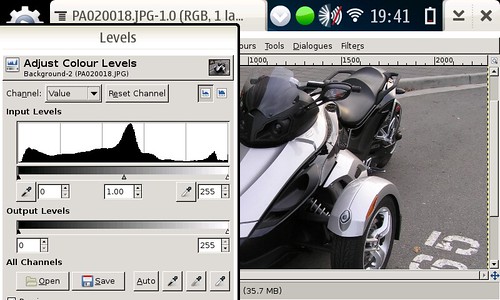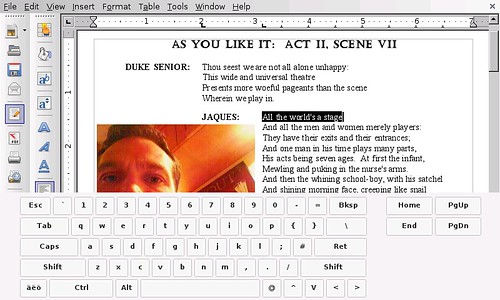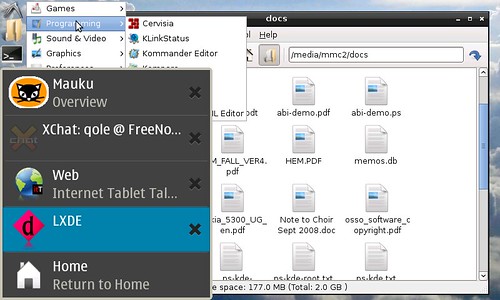N900 Easy Debian, After PR 1.2
Executive Summary: There's a new version of Easy Debian in Extras-testing that has a much better method for getting the keyboard working in LXDE after the PR 1.2 firmware update changed things.
The recent PR 1.2 firmware update fixed many bugs and added many features, but it also "broke" a trick that Easy Debian folks had been using to get keyboard focus back after returning to LXDE from another app.
A little background: Maemo 5's window manager, Matchbox 2, is very strict about the keyboard focus rules, far, far stricter than any other window managers. They did this for power management reasons. Some people have called this a bug, but others argue that this is the most correct way to do it, and it is the fault of sloppy applications.
Whoever is to blame, there are quite a few apps out there that don't work properly with the N900's window manager. Unfortunately, the Xephyr nested X server that Easy Debian uses to run LXDE inside Maemo is one of those apps. Finding a way to get keyboard focus for Xephyr was one of the first hurdles facing the Easy Debian project when porting to Maemo 5.
The original breakthrough happened when qobi wrote a little "fixer app" that "fixed" non-compliant windows when given a window ID as a parameter. This method gave initial keyboard focus to LXDE when starting up.
Someone discovered a much more elegant workaround, however. All you needed to do was press the power button and then clear the menu by pressing the screen outside the menu, and the current window would receive keyboard focus. This became the standard method for returning to Easy Debian's LXDE after using another app, such as receiving a phone call or taking a picture.
When the long-anticipated PR 1.2 firmware update came, Easy Debian users were dismayed to discover that they couldn't use the power button to get their keyboard back in LXDE. Even worse, that trick made it impossible for the user to hit Ctrl-backspace to get back to the dashboard. The only ways to "break out" of this keyboardless LXDE were to either log out or to open the camera. Not a good situation.
After some hacking, we have managed to get things working again. It isn't as neat as the power button workaround, but it is nearly as good. Now, the same LXDE icon that opens LXDE in the first place also returns you to LXDE with keyboard focus. So you only need to put the Easy Debian LXDE icon (the red diamond with the "d" in it) on your desktop and press it whenever you want Easy Debian LXDE.
If you want this new version (and if you use Easy Debian LXDE, and you have PR 1.2, then yes, you want it), enable the Extras-testing repository and get the update. Please be aware that any other apps that offer updates after you enable Extras-testing may not be ready to be installed, since they may not comply with the community's QA standards.
If you have any questions about Easy Debian, they're probably answered in the the Easy Debian wiki page, but if not, go to the talk thread and ask your question there.
Labels: chroot, debian, easy, fremantle, hack, keyboard, maemo, n900


